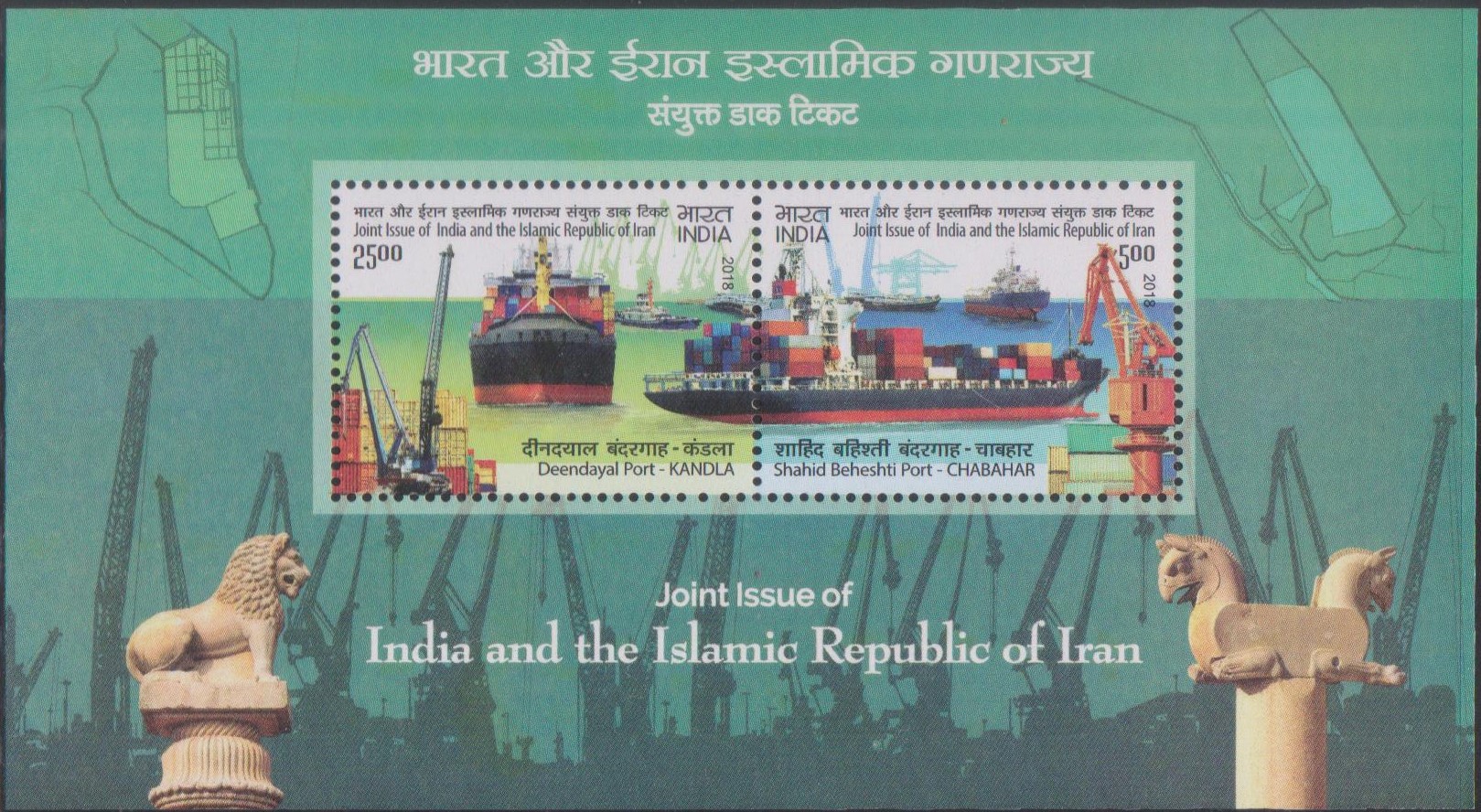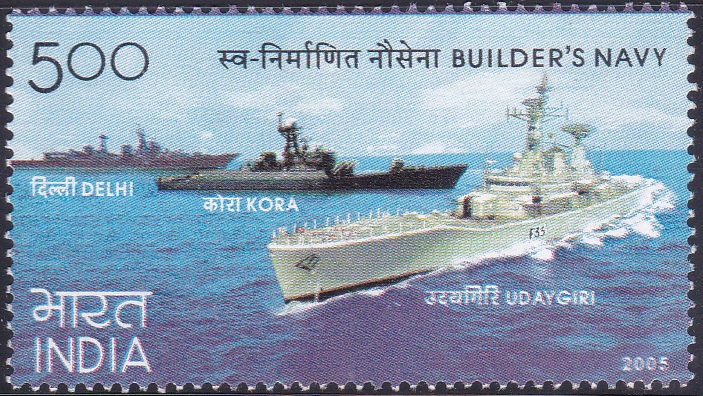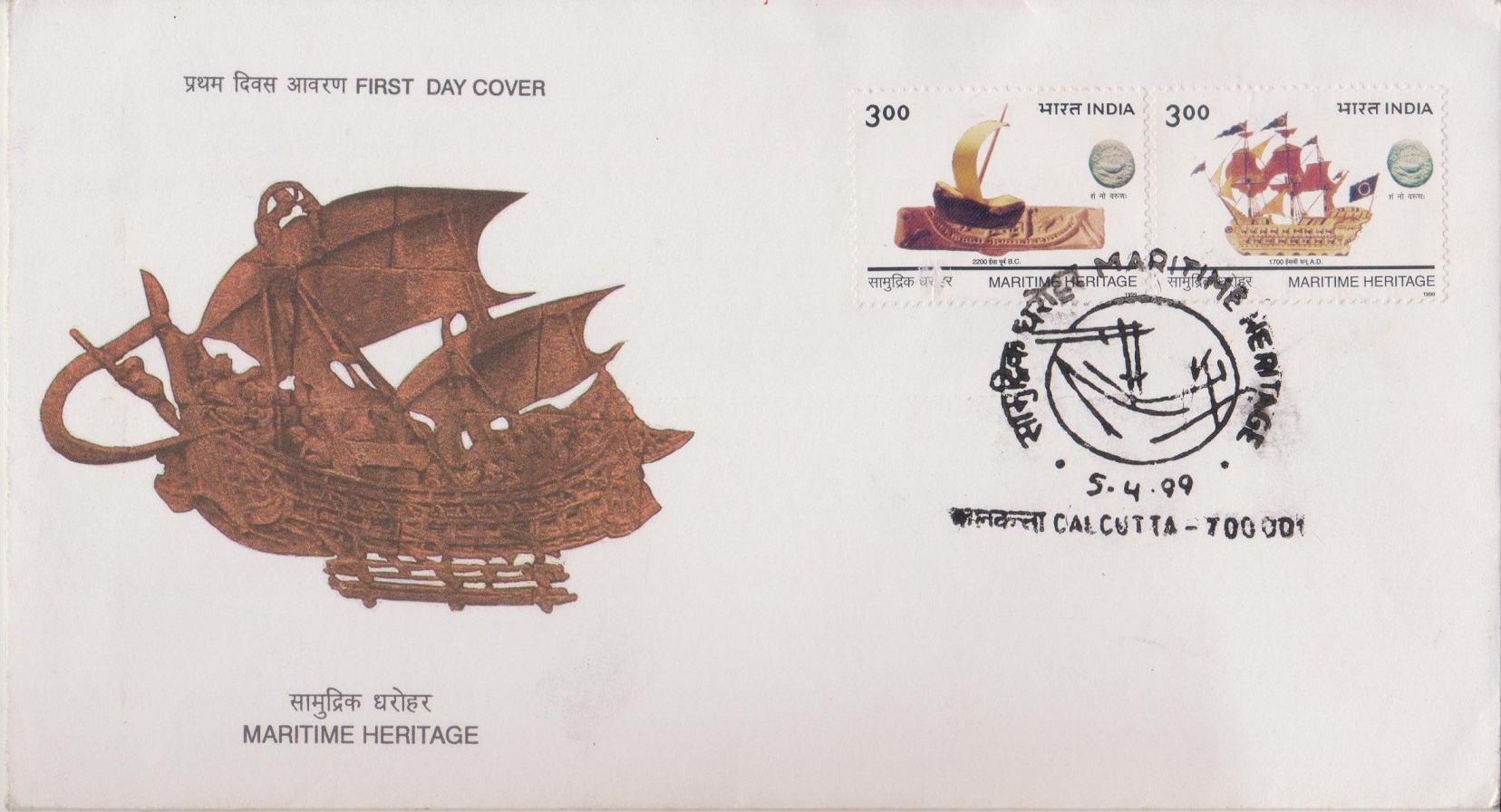
Maritime Heritage of India
Complete Set of 2 nos of commemorative postage stamps on the National Maritime Day 1999 :
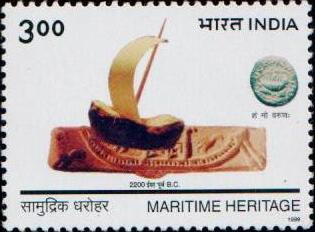
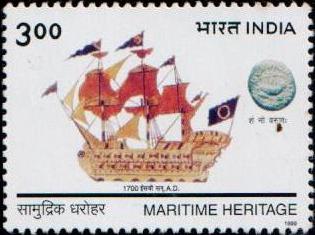
 Issued by India
Issued by India
Issued on Apr 5, 1999
Issued for : The Department of Posts is happy to issue a set of two commemorative stamps on the occasion of National Maritime Day. The first stamp depicts a terracotta model of a boat excavated from Lothal, superimposed on an Indus seal depicting a sailing vessel. The second shows a ghurab of Kanhoji Angre’s fleet as depicted in a circa 1700 A.D. painting. A lead coin of the Satavahana period (second century A.D.) depicting a double-masted sailing vessel appears on both the stamps. The First Day Cover carries an illustration from the stone sculptures of Borobudur revealing the spirit of adventure of the Indian mariners who settled in the Javanese islands in the eighth century.
Credits :
Stamp & FDC : Based on material furnished by Naval Headquarters
Cancellation : Alka Sharma
Type : Stamps, Mint condition
Colour : Multi Colour
Denomination : 300 & 300 Paise
Overall size : 3.90 x 2.90 cms.
Printing size : 3.50 x 2.40 cms.
Perforation : 13 x 13
Paper : Matt Chromo
Stamps Printed : 0.7 Million Each
Number per issue sheet : 40
Printing Process : Photo Offset
Printer : Calcutta Security Printers Ltd.
About :
- The fact that the word ‘navigation’ has its root in the Sanskrit word navigati (navigation) underlines the antiquity of India’s Maritime Heritage. The discovery of 5000 years old Malabar teak beams in the ruins of Ur in Babylon (Iraq) and an Indian cedar beam at the palace of Nebuchadnezzar at Birs Nimrud dating back to 600 B.C. prove that our ancient ship-wrights had made considerable advances in technology.
- With the discovery of the Lothal port and dock dating back to circa 2400-1900 B.C., it became clear that the Indus Valley Civilisation did have a maritime dimension also. Evidences of smaller ports of the same era were unearthed at places like Bhagatrav, Satkagendor and Sutkakoh. The commercial acumen of India’s merchant class and the zeal of Buddhist missionaries must have given tremendous impetus to ship-building in the subsequent centuries. When we move from the terracotta boat model of Lothal and engraving in Indus seals to the depiction of ships and boats in Ajanta caves (circa 600 A.D.), the advancement in technology from single sail ships to sewn plank ships with three sails is in evidence.
- Travelogues of Huan Tsang, the Chinese pilgrim contains references to the port of Chelitalo (in present day Orissa). Another Chinese pilgrim Fa–Hian had returned to China from India in a large merchant vessel with a capacity of two hundred passengers. Yuktikalpataru, a Sanskrit work of the eleventh century A.D. mentions large ships of Indian origin, which are unlikely to have been more products of imagination. For instance, the Sindh rulers who could push back the Arab sea-attacks on Sindh in the eighth century must have employed large ships in the offensive. The Chola Kings Raja Raja who annexed Lakshadweep and Maldives islands in the eleventh century and Rajendra who conquered Sri Lanka and established a naval base in Andaman and Nicobar must also have had large vessels. The thirteenth century saw Chandrabhanu, the Sailendra King making attempts to conquer Sri Lanka, which according to the noted historian K.M. Panikkar involved combined action of thousands of soldiers and hundreds of ships.
- Calicut on the west coast of India emerged as a major port of the Indian Ocean in the middle ages and it was no coincidence that Vasco da Gama landed here in 1498 A.D. However, Zamorin, the local ruler could not match the sea power of the Portuguese and in the battle of 1509 A.D. the Europeans wrested control of the Indian coast despite the valiant defence put up by Mohammed Kunh Ali, the legendary mariner. Another brilliant chapter in India’s Maritime history is that of the Maratha Navy under Tukoji Angre fighting the Europeans from 1640 onwards. However, the Indian ships without docks could not be equipped with sufficient fire power to take on the Portuguese, and they slowly faded out from the high seas.
- During 19th Century, the industrial revolution changed the design and material used in ship construction. Iron replaced wood, and steam came in pace of sail. Our shipbuilding industry also suffered a setback during the British rule due to its colonial policies. However, since Independence, there has been a fillip in this field. Our country is now building a variety of indigenous vessels including various classes of tankers, trawlers, bulk carriers, coasters, offshore rigs, ancillary-craft, oceanographic research vessels, warships and submarines in various yards along both coasts.
- In 1919, the first Indian owned passenger-cum-cargo ship SS Loyalty started sailing from Bombay to UK on April 5, which is now observed as the National Maritime Day.
- Text : Based on material furnished by Naval Headquarters supplemented by material from Marine Archaeology, July 1993.



